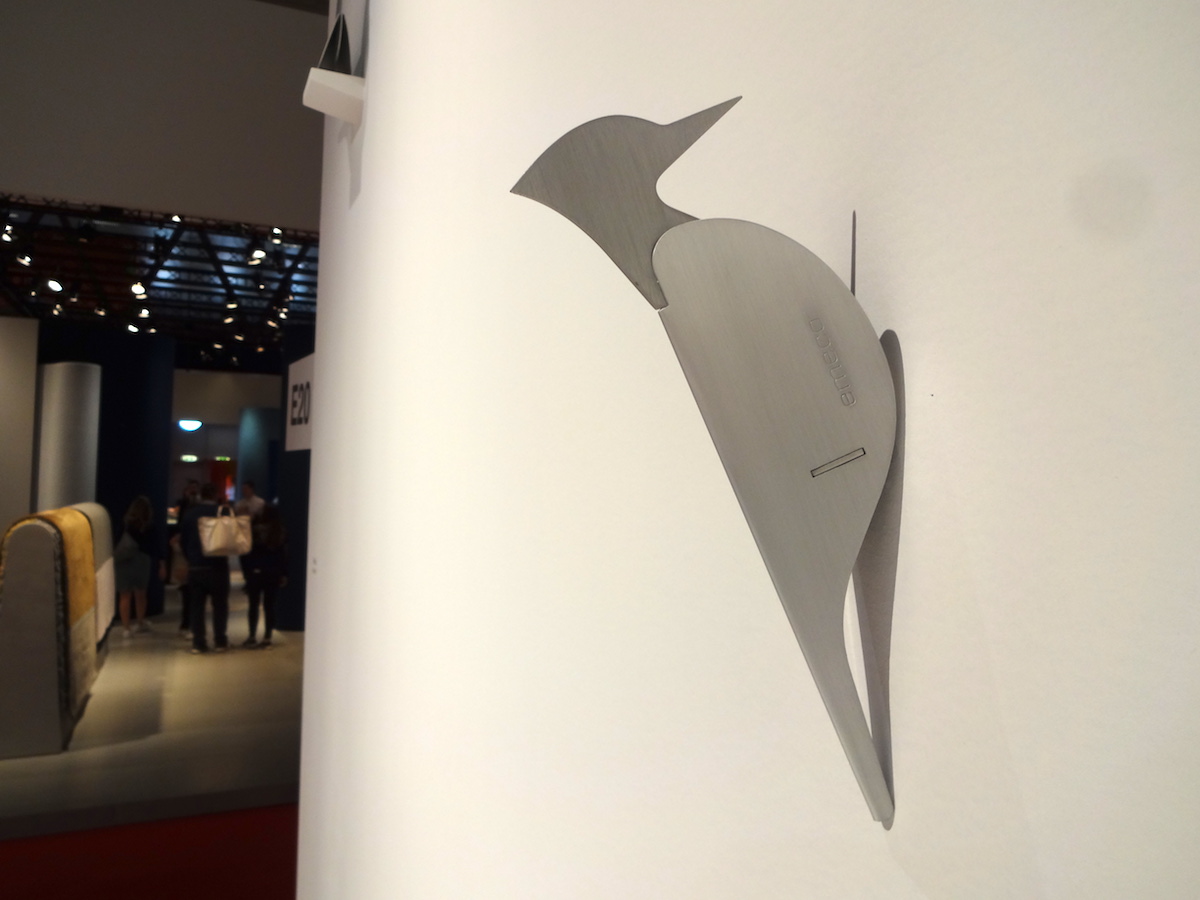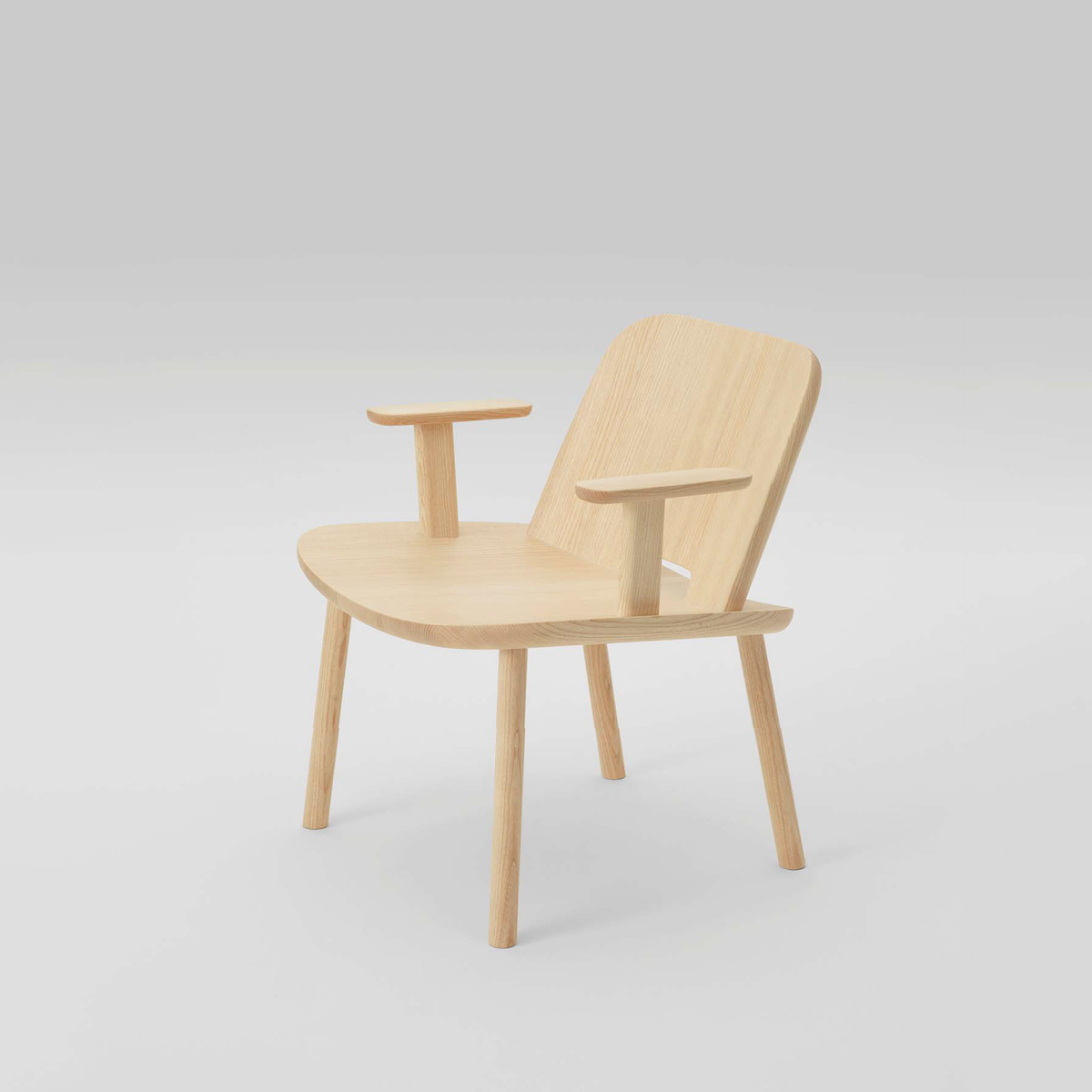Jasper Morrison speaks like he designs: calmly, quietly, with precision. He is a man of few words, but the words he chooses to use count. Highly selective in the projects he takes on, he is known for his pared-down, less-is-more approach, both in practice and in execution. It’s one that has helped him become one of the most respected and closely watched designers working today. At the Emeco booth at this year’s Salone del Mobile design and furniture fair, Surface caught up with Morrison to discuss his latest projects for the American manufacturer (including one by a mentee), as well as his new Fugu armchair for Japanese brand Maruni, his love of vintage Fiat Cinquecentos, and his distaste for heated toilet seats.
Jasper Morrison Believes Technology Is Turning Us Into “Little Limp Puddles”
The British designer talks reused plastic, the Internet of Things, knockoffs, and more at this year’s Salone del Mobile fair.
Interview by Spencer Bailey April 25, 2018
Tell me the story of these Emeco birds all over the booth walls.
There’s a system in France where you find a “master” to consult with you over your degree project, and I had a very good student, Yun Li. He was already a student of my assistant, Jun Yasumoto, and through Jun, he asked if I would look after his project, which I did. And he did it brilliantly. As a present, he gave me one of these—a pigeon. I thought it was such a great object, and showed it to Gregg [Buchbinder, Emeco’s CEO], who immediately wanted to keep it. I had to sort of take [the pigeon] back, because I knew it would just disappear [if I gave it to him]—we were already talking about doing it with Emeco. I told him, “No, no, no, no, no. I like it too much.” We’re still not really sure what [this collection of birds] means, but it somehow seems to fit in with Emeco. It expresses something Emeco-like.
Gregg told me that, in part, the birds are being produced by using the company’s scrap metal.
Yeah, I reckon they have a lot of it. [Pauses] I’m quite a fan of the woodpecker.
I think the woodpecker could be a bit bigger, actually.
It’s a little small—you’re right! I’ll tell them to correct that. [Laughs]
Did you know immediately, with the bird, that you wanted it to be an Emeco project?
I knew Gregg would like it. I didn’t know how he’d react, whether he’d want to do it or not, but I wanted to help this young guy out.
It doesn’t seem so common to have an older generation, or a “master,” to so happily bring someone into the fold of a company like this.
Really?
Well, I can’t think of that many examples.
I think it’s nice to find some way other than just doing your own products all of the time—to put something else back into the system. For quite a while, in Paris, because it was just Jun working by himself in an eighty-square-meter office, and I was not there all the time, we had maybe four of five people there as interns. It made such a difference to the office, having these young people around. Their rather naïve outlook was refreshing.
The bird is a playful, lighthearted addition to Emeco. It kind of made me think of the Eames House Bird.
There is that, yeah. But because we have five different kinds of birds, I think we can be excused of any accusations of copying or imitation. This is the start. Let’s see what happens. In the end, it could become an Emeco mascot that gets distributed to shops. I don’t know if they’re really a product to sell.

You’re also introducing a new “Reclaimed” edition of your Emeco 1 Inch chair this year.
I’m very fond of this [“Reclaimed”] material—it’s such a good way to use plastic. Instead of just using virgin polypropylene, Emeco has found a [way to use] the waste. I love the mix with the sawdust. It’s a peculiar thing that when you take one waste material and you mix it with another—sawdust—that you get a richer material than either of them on their own. Not richer than wood, but richer than normal plastic.
How exactly is this plastic made?
In a factory that molds stuff using polypropylene. Every time they change the color, they pump out all of the waste—the stuff that’s in the machine and getting melted and injected into the mold. They need to cycle it and cycle it and cycle it. Between two color batches, there’s a whole run of, I don’t know, between fifty and one hundred pieces that are sort of half-and-half. Which generally the companies don’t want to sell, because they look a bit weird. They look a bit Gaetano Pesce. So here, those are re-granulated, chopped up, and mixed with sawdust—which reduces the plastic bulk and helps bind it. And then you get this material, which is not recycled but reused. The Broom chair, I think, was the first to use this [mixture], and then we used it for the Alfi chair, and then we also used it on the seat of the aluminum model. It’s a great material that, I think, is better than virgin polypropylene.
What else do you have at the fair this year?
A chair at Magis. Another at Maruni. Another at Cappellini. And then at Vitra I have some tables. It’s sort of an average year for me.
[Laughs]
Does that seem like a lot? I think most designers have much more than that. Luca Nichetto and Nendo—they do something like thirty projects a year. Five or six is quite modest.
Yours is the slow-and-steady model.
Yeah, I get terribly tired if I do a bad project. It zaps all the energy from me. It’s terrible when you feel like you’ve wasted everybody’s time, including your own.
Is there a project you’re particularly excited about this year?
This one [the “Reclaimed” 1 Inch chair]. And the Maruni one was fun, because it’s a wooden chair: The aim of the project was to make a wooden chair that’s as comfortable as an upholstered chair. The idea was that an upholstered chair has an average life of between two and fifteen years, depending on how much use it gets, whereas a wooden chair gets better and better [as it ages]. So if a wooden chair could have the comfort of an upholstered chair, then it would be a very sensible proposition. When you think about an upholstered chair, when it ends its life, you can’t recycle it, because it’s all glued together in layers of horrible stuff—there’s usually a bit of metal, some wood legs that are glued on, some springs maybe, some foam, fabric. Of course, it’s a popular solution, but.…

When you’re designing, are you always thinking about the life cycle of the object?
Sure. It’s a bit like doing a bad project: If you do a project that after two years you don’t want to see again, it’s equally depressing. Whereas if you see a project you did two years ago still being specified, that’s great.
One of my first industrial projects was a door handle for a German company, and that product recently turned thirty-one years old. The other day, I got this shitty letter from the manufacturer saying that the design copyright is now expired and “we have paid you the past year’s royalties in error. Would you please refund them?” What a nice way to celebrate! How charming!
Happy thirty-first! [Laughs]
Yeah, it’s an ongoing conversation with them.
Well, at least not all companies are like that. It seems like you have a great relationship with Emeco.
I do. Gregg is really rare. He’s one of the few manufacturers who discusses what we’re making, how to make it cleaner and better and more recyclable, how to make use of something that would otherwise be waste.
I’ve gotten really interested in this idea of what I call “Slow Design”—something that’s done thoughtfully, with intent, over time, and with care for the planet. Just as we have gotten obsessed over what we’re eating, if people could start thinking that way from a design-product perspective, the impact, I think, would be profound. In America, we just don’t have the tradition, history, or understanding of design that exists in Europe. I think it’s a positive that Emeco and some others are starting to fight knockoffs coming into the country. It’s really about promoting the value of good design.
There’s a chair I did for Vitra two years ago called APC. Someone sent me a photo of a really bad copy in Mexico. I don’t know if it was made in Mexico but probably. It was really rough. You just think, Why would they bother to do it so badly? It’s an ongoing evil.
Part of this, I think, is about instant gratification. Soon, I hope, we’ll see the emergence of a culture of slowing down. Everyone’s practically addicted to their screens. We’re craving the human—eye contact, real relationships, a deeper connection. And that includes long-lasting products.
I had a journalist ask me today about the Internet of Things. I wasn’t prepared for it, but I just let loose. I said, “I don’t want a fucking machine to let me know I left the cheese in my fridge. And I don’t want to turn on the heating an hour before I’m home just do I can feel nice and cozy.” I want real life, not this shit. This Facebook story [of harvesting members’ data]—enough! It’s a stupid idea of how we should live.
Yes, technology can be integrated into our lives in a better, smarter way.
By us using it less maybe.
Yes, less but better.
As far as I’m concerned, I just don’t want all that extra crap. It’s a bit like when you drive an old car, like a [Fiat] Cinquecento, and there’s just a speedometer and a gear stick. Driving one is such a richer experience than [driving] a new car with a screen that shows what’s going on behind you. Or take heated toilet seats. Are we really so feeble that we need heated toilet seats? Where are we going with all this stuff? We’re just going to be little limp puddles.
For more on Milan Design Week, including must-see moments at Salone, a guide to Milan, and more, check our featured section on the site »